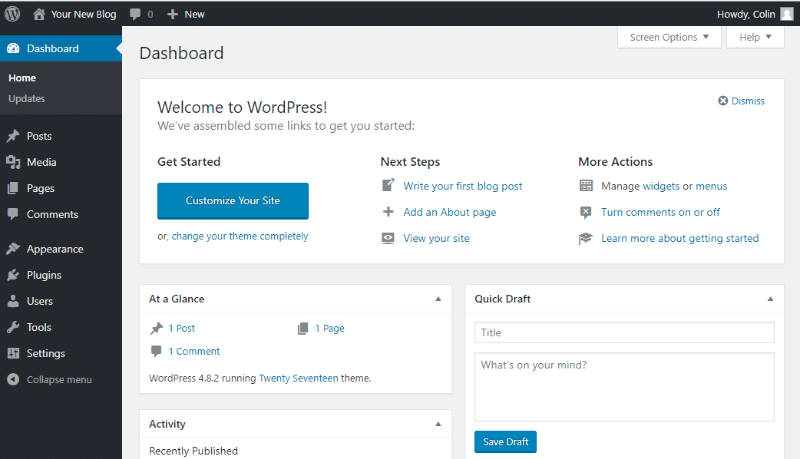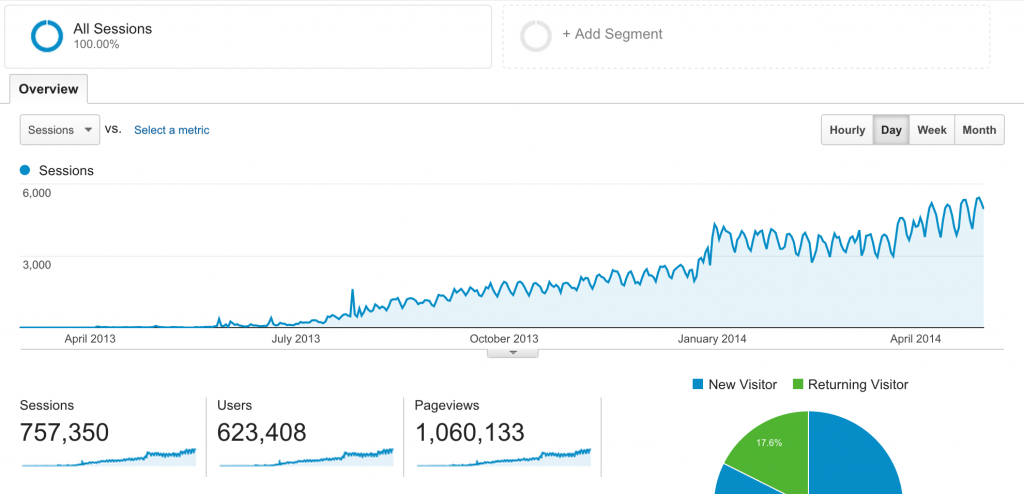Everyone loves the idea of being able to work from home. And freelancing is one of those career paths that really open up the door to this concept. As a freelancer, you can use your existing expertise to create content of many different types, and either work for yourself or work for other companies.
The most popular types of freelance jobs are writing, programming, graphics design, video editing, and digital marketing. These involve the need for an individual to have a specific skillset, and in turn, the said individual knowing how to use that skill set to benefit other companies.
For this specific article, we’re going to look at freelance writing specifically. We’ll explore what it takes to become a freelance writer, and how you can grow yourself as a brand and land amazing clients. As with any career choice, there is a learning curve, but the benefits you can reap from going freelance easily outweigh the time requirements to become good.
So, let’s not waste any time. Let’s start going over all the learning material step by step.
Start with a long-term vision.
A vision is what keeps you grounded. Without a vision, you’re going to risk trying to jump into every water puddle only to end up nowhere. Also, a vision will prevent you from taking on too much.
At first, it might be tempting to take any job you get, but this can lead to fatigue, and ultimately burnout. That’s not what you want.
Understand your expertise.
What topics or fields of education are you good at? It helps to understand this early on. If you’ve had experience with HTML5 for a number of years, then it would be wise to start there. As a writer, you could be producing tutorials on HTML5, informative articles, and educational step by step guides.
However, you might be tempted to also combine other technologies into your work, such as CSS3 and JavaScript. If you have experience with those, then sure, it’s a wonderful idea. But, if you don’t, you’ll risk at producing sub-par work by having to spend twice as much time.

Expertise comes down to what you’re good at. It’s great to learn new things as you go, but define your initial areas of expertise early on. This will also help you avoid dealing with clients who constantly reject you.
You can apply this to any other topic that you’re passionate about. Whether it’s food, travel, technologies on the Web or anything else.
Launching a blog: things to know.
Okay, so, know you know about having a vision and defining your expertise. The next step is to put all that to work. And the way to do it is through launching a personal blog. In essence, your personal blog is going to act as a ‘digital business card’ for your work. And it’s pretty much mandatory if you wish to become a professional freelance writer.
The fact of the matter is, there is fierce competition in the market of freelance writers. Anyone can do it, with minimal effort. But, the way to stand out is to showcase to your clients that you’re not only an expert in a specific field, but you’re also attracting readers to your content.

In the end, it’s numbers that do all the talking. If you’re unsure on how to start a blog, we’ve got several articles here on StylemixThemes to help you with that. Specifically, the article on ‘how to start a WordPress blog’, and also ‘things to know about WordPress blogging’.
Writing regularly is practice.
Once you start diving into the world of blogging, you might feel a little overwhelmed at first. So many brands and content creators are creating exceptional content, which is consumed by hundreds of thousands of people on a daily basis. Surely, you can’t compete with this?
Of course, you can. As with all things, writing requires a ton of practice and determination. To become the best, you have to perform like the best. And in order to do that, you need a lot of practice. This is one of the core reasons why you’ll want to start your own blog.
If you build it, they will come.
The word ‘they’ here is meant as your audience. If you build a platform, then your audience is surely going to show up. That’s how it works on the web, and it’s one of the most prominent metrics for showcasing your expertise in any given category.
By working on interesting ideas and producing unique content, you’re naturally going to attract new readers. Not only is this a great encouragement to your own work, but it also starts to look good on your freelancing portfolio. Your future clients will want to see what people think about your content.
And the more creative you can get, the more you can break down specific ideas, the more attention you’re going to attract to what you’re sharing.
Don’t expect results any time soon.
That said, if you’ve just started a blog, don’t get into the pattern of expecting results quickly. If there was a quick way to success in this career path, then most people would be writers and bloggers already.
In my own experience, I have created more than a dozen content blogs in the last 10 years. And every time, it has taken anywhere from 3 to 6 months to see substantial results in traffic and engagement. It’s a steep hill to climb, but the rewards at the end of it are invaluable.

Having experience in producing engaging content will also help you work better with your future clients. Not only will you understand your topic better, but also know the ins and outs of producing high-quality content.
Relationship building with other bloggers.
Moving on, we should touch on relationship building and collaboration with other bloggers. This is arguably one of the best methods for growing your brand outside of your own blog. Being able to put your name on a successful article is invaluable for your credibility and overall portfolio.
That said, there are precautions to follow and things to remember.
Be smart about who you target.
It can be tempting to go after every opportunity presented to you. But, remember this, not all opportunities will produce you with the results you expect. In the current age, it’s much wiser to create a strategy around the type of bloggers you’re targeting for collaboration opportunities.
Think of it this way, would you be interested in having your site visited by the same type of audience that you’re contributing an article to? There are some SEO benefits from guest blogging, but in most cases, you’re going to want to target real readers.
The easiest way to find relevant bloggers to your niche is by looking up on Google and social platforms like Twitter. Simply search for similar content and see what kind of sites are producing content in the same category as you.
Some won’t be keen to have your guest blog but rest assured that many will present you with such an opportunity. Even if that means having to follow some strict rules provided by the blogger.
Engage other creators in your content.
If you want to build your brand, and your blog, quickly — then you must have a way to engage creators directly. The best way to do this is by engaging other creators inside your own content pieces.
For example, you could put together a list of quotes from industry experts on a specific topic. And, rather than copy and pasting those quotes from somewhere — reach out to each expert individually. Show an interest in their work, and explain to them the specific piece that you’re working on.

At the end of it, once your finalized post is ready, you can reach back out to them and tell them the address of the published page. Chances are if you go a good job with formatting and presentation — many of those experts will gladly share your work with their audience.
The key element here is presentability. You want to show that you’ve put in enough effort. Don’t just slap some text on a page and expect results. Find an approach that feels engaging but also informative and useful.
This kind of tactic can be employed for many different topics. Especially those topics where people would be interested in an authentic opinion.
Focus on your personal style.
How can you make sure that you’re going to be recognized as a freelance writer? The easiest way to do this is by focusing on your very own style. Whether it’s a style of writing, a style of marketing, or both combined — having something that sets you apart from everyone else is the golden ticket to success.
For example, if your work has been featured in editorial magazines or prominent blogs on your topic — this gives you leverage as an experienced writer. You can use that as a means to promote your own brand, but also to further develop your own portfolio.
All successful writers will tell you that there comes a point in their careers where they no longer need to reach out to companies. Those companies reach out to freelancers themselves because they need people with expertise to produce content for them.
So, how to go about this? Here are a few tips to help you out.
Steal, but make it better.
Is it really stealing if you make it better? This is the dilemma of writers who curate a lot of content and gather ideas from other bloggers. The key is not to sound exactly the same. The key to success is to take an idea and make it ten times better than it was initially.
You can never have too much value, and having a strong high-quality article on one specific subject is better than a dozen smaller blog posts discussing the same idea.
Take any successful blog in your specific niche. Look at some of the latest posts, and ask yourself, “Is there anything I can do to produce a better post?”. Even if it means you have to go out of your way, making that choice will season you as a professional writer faster than you can imagine.
Invest in visuals as much as possible.
Lastly, on the topic of style and uniqueness, learn to work with visual elements. This can be anything from simple images to graphs. Visuals are the bread and butter of successful blog posts, and most companies that you’re going to work with will want you to have experience with this.

A visual element adds so much value and interactivity to a blog post that in this day and age, it’s simply a skill you must develop alongside your writing.
Some companies prefer still images, while others are open to more fun and dynamic visuals like vector graphics and GIF art. It’s up to you which route you want to take, but learning to add visuals to your content is a must-do!
Be an effective writer.
All writers experience bottlenecks in their career path. It happens to the best of us. Sometimes, you get caught up in multiple ideas at the same time. Other times, you have an idea you want to work on but don’t know where to start. It’s natural and nothing to feel guilty about.
I’ve experienced this countless times myself, and over the years, I have come to learn a few simple tricks to help myself be an effective writer.
Plan ahead of time.
A plan means that you’re set for work. Without a plan, you might have an idea for an article, but not much else. So, all plans should involve creating a direct map of what will happen inside and outside of your article.
Is your post going to be based on lists and bullet-points mostly? Are you going to implement a graph that depicts specific statistics? Maybe you’re going to write on food, and rather than providing a recipe, you’ll discuss the origins of the said dish. There are many approaches to take with any-one given content piece, and it pays to understand your plan ahead of time.
Create outlines.
An outline is a finished post without all the content written for it. In short, and outline explains all the small details of your post before you start to write it out. With an outline, you won’t get lost in your thoughts because you’ll have a clear direction to follow.
Taking the reader from one headline to the next, each complementing one another. So, if you’re serious about becoming a freelance writer, learn a thing or two about writing outlines. They’ll help you tremendously, and you’ll avoid having to think of new stuff as you go.
The intro is generally the hardest part.
As a seasoned writer, I can tell you straight away that the intro part is oftentimes the most difficult. It’s where the magic happens. It’s the one place where you have a few seconds to lure in a reader into your piece.
In this age of content scanning and lack of interest, it’s crucial that your first couple of sentences entice the reader to continue reading. That said, don’t make an overly big deal out of it. Use the intro part to make a short and sweet introduction of what people can expect throughout the entire article or blog post that you’re writing.
If necessary, divide the intro into a few subsections to make it even more clear on what you’re providing to the reader.
Start now and be done with it.
Becoming a successful writer and making a business out of it doesn’t happen overnight. Apart from all that you’ve learned in this article, you also have to consider the actual business implications of it all. E.g. Tax management, paying salaries, resource management and much more.
Not to mention, finding your very first freelance job. I think for new writers, it would be helpful to use sites like ProBlogger or Upwork to find your first gig. It might not pay much, but it will introduce you to the idea of getting paid for the words that you’ve written.
Also, for all you new writers, I highly recommend getting the Grammarly add-on for your browser. It’s an invaluable writing assistant that will help you produce better sentences with top-notch structure. In fact, we have an entire post dedicated to essential tools for writers. Check it out!
Other than that, feel free to ask questions or leave feedback in the comments below. All the tips and tricks shared in this article will get you started on the right path. How you decide to take it further is entirely up to you. And that’s a good thing.




























